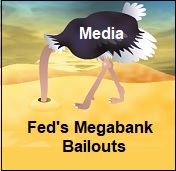-
Recent Posts
- Trump’s “Big Beautiful Bill” Is a Grotesque Giveaway to Fossil Fuel Billionaires While Adding $3.3 Trillion to Nation’s Debt
- Senator Chris Murphy Charges that Trump “Has Opened a Channel for Bribery”
- Congressman Casten: Trump’s Assault on the Rule of Law Is Causing Capital Flight Out of U.S. by Foreign Investors
- Trump’s Approval Rating Drops to 80-Year Low; IMF Says U.S. Tariffs Now Exceed the Highs During the Great Depression
- Nasdaq Has Lost More than 3,000 Points Since Trump’s First Full Day in Office in 2025; the Pain Has Barely Begun
- The Bond Crisis Last Week Was a Global No-Confidence Vote in U. S. President Donald Trump
- Trump’s Tariff Plan Guts $5 Trillion in Stock Value in Two Days; Senator Warren Calls for Emergency Action Before Markets Open on Monday
- Trump’s Attacks on Big Law, Universities, and the Media Have a Common Goal: Silence Dissent Against Authoritarian Rule
- Trump Administration Gives All Clear to Laundering Money through Shell Companies and Bribing Foreign Officials
- Four Megabanks on Wall Street Hold $3.2 Trillion in Uninsured Deposits – Which May Explain Senator Schumer’s Pivot to the GOP to Stop a Government Shutdown
- Here’s What Came Crashing Down Yesterday for Trump’s “Genius” Guy, Elon Musk: Tesla Stock, Access to Twitter (X), His Years of Secret Calls with Putin
- After Banning the Associated Press, Trump Is Now Targeting Specific Journalists That He Wants to See Fired
- Closely Watched Atlanta Fed Model Predicts Negative U.S. Growth in First Quarter
- Trump’s Gangster Diplomacy Makes Front Page Headlines Around the Globe
- Who Benefits Alongside Elon Musk If He Succeeds in Killing the CFPB: the Megabanks on Wall Street that Underwrite His Tesla Stock Offerings
- In Trump 1.0, the State Department Used Taxpayer Money to Publish a Book Elevating Elon Musk to a Superhero; It Was Funded by USAID, the Agency Musk Wants to Quickly Shut Down
- News Host Joy Reid Raises Threat of Trump Selling U.S. to Putin; Ten Days Later Her Show Is Cancelled
- Elon Musk’s DOGE Appears to Be Violating a Court Order; It Has Taken Down Hundreds of YouTube Videos that Educate Americans on How to Avoid Being Swindled
- Barron’s Releases Audio of Jamie Dimon Cursing Out His Workers at a Town Hall, as Dimon Plans to Dump Another One Million JPM Shares
- There’s One Federal Investigative Agency that Neither Trump nor Elon Musk Can Touch: It Just Opened an Investigation into DOGE
- Elon Musk’s Companies Were Under Investigation by Five Inspectors General When the Trump Administration Fired Them and Made Musk the Investigator
- Donald Trump Gives the Greenlight to Goldman Sachs and JPMorgan Chase to Return to Bribing Foreign Officials
- After Tech Geeks Built a Back Door to Loot Billions from FTX, Republicans Refuse to Investigate What Elon Musk’s Tech-Squad Did Inside the U.S. Treasury’s Payment System
- Former Prosecutor, Now U.S. Senator, Informs Tesla That CEO Musk May Be Violating Federal Law and to “Preserve All Records”
- Trump’s Hedge Fund Guy Is Now Overseeing the U.S. Treasury, IRS, OCC, U.S. Mint, FinCEN, F-SOC, and the Consumer Financial Protection Bureau
- As Elon Musk Begins Shutting Down Payments to Federal Contractors, a Strange Money Trail Emerges to His Operatives Inside the U.S. Treasury’s Payment System
- JPMorgan Chase Charged by Yet Another Internal Whistleblower with Cooking the Books
- We Asked Google’s AI Search Model, Gemini, Questions About the Fed and Wall Street Megabanks: It Got the Answers Dead Wrong
- With Trump and Melania’s Crypto Coins Likely to Raise Legal Challenges, Why Didn’t Trump Fire the SEC’s Inspector General in His Purge of IGs?
- Fossil Fuel Industry Could End Up Paying Tens of Billions for LA Wildfires and Deceiving the Public on Climate Change for Decades
- It’s Being Called the Biggest Grift by a President in U.S. History: Trump and First Lady Launch their Own Crypto Coins
- Trump Plans to Install a Fracking CEO to Head the Energy Department and Declare a National Emergency on Energy to Gain Vast Powers
- Fossil Fuel Money Played a Role in the Los Angeles Fires and the Push to Install Pete Hegseth as Secretary of Defense
- When It Comes to Wealth Retention in Retirement, Concrete May Be the New Gold
- Wall Street Watchdog Warns “Clock Is Ticking on a Coming Catastrophic Financial Crash”
- Wall Street Is Sending the Same Message to Americans on Fossil Fuel Financing that It Sent on Cigarettes: Drop Dead
- In a Six-Week Span, this Dark Pool with a Curious Past Traded 3.7 Billion Shares
- Wall Street’s Lobby Firm Hired Eugene Scalia of Gibson Dunn to Sue the Fed for Jamie Dimon
- Postmaster General Louis DeJoy Made $561,051 in Compensation in 2024, as Mail Costs Spiked and Delivery Deteriorated
- Fed Chair Jay Powell Sends a Bold Message to Trump and Tanks the Dow by 1123 Points
- The Head of Fixed Income at T. Rowe Price Makes the Scary Case for the 10-Year Treasury to Spike to 6 Percent
- $663 Billion in Cash Assets Have Gone Poof at the Largest U.S. Banks
- Donald Trump to Ring Bell at New York Stock Exchange Today as Hit List Posters Appear in Manhattan Targeting Wall Street CEOs
- Trump Has a Slush Fund to Prop Up the Dollar – Will He Use It to Prop Up Bitcoin Instead?
- A CEO Assassination; a Billionaire Heiress/NYPD Commissioner; a Secret Wall Street Spy Center – Here’s How They’re Connected
- Despite More than 1600 Tech Scientists Signing a Letter Calling Crypto a Sham, Trump Names a Crypto Cheerleader for SEC Chair
- The Fed Rings a Warning Bell: Hedge Funds and Life Insurers Are Reporting Historic Leverage
- Trump’s Nominee for FBI Director, Kash Patel, Has Businesses Financially Intertwined with Trump
- Donald Trump Is at Risk of Getting Named in a Fossil Fuels Conspiracy Lawsuit
- Trump Is Having Difficulty Getting a Lawyer to Accept the Nomination for SEC Chair: Here’s Why
Search Results for: Federal Reserve
A Growing Wave of Bankruptcies Threatens U.S. Recovery

By Pam Martens and Russ Martens: May 28, 2020 ~ The bankruptcy epidemic in the U.S. started last year, long before any COVID-19 pandemic had touched down. U.S. retailers ranked among the greatest casualties of 2019 with a total of 17 bankruptcies. Big names among the retail bankruptcies in 2019 included Gymboree on January 16; Charlotte Russe on February 3; Things Remembered on February 6; Payless ShoeSource on February 18; Charming Charlie on July 11; Barneys New York on August 6; and Forever 21 on September 29. Now, the retail shutdowns resulting from COVID-19 have simply accelerated what was already a growing trend of companies seeking relief from debts they cannot pay back. Some of the major bankruptcies this year mean permanent, not temporary, job losses. The 118-year old J.C. Penney Co. had 846 stores when it filed for bankruptcy on May 15 of this year. It said it plans … Continue reading
Fed Admits Corporate Bond Buying Will Be at Least a 5-Year Debt Bailout
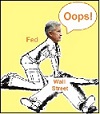
By Pam Martens and Russ Martens: May 27, 2020 ~ On May 13 the House Financial Services’ Subcommittee on Consumer Protection and Financial Institutions held a virtual roundtable with federal regulators. One of the regulators in attendance was the Vice Chair for Supervision at the Federal Reserve, Randal Quarles. At the very end of what evolved into a roundtable beset with static and inaudible passages, it was Utah Congressman Ben McAdams’ turn to ask questions. McAdams’ voice was sharp and crisp. He politely said he had a question about the corporate bond buying program that the Fed was launching (for the first time in its 107-year history). The exchange went as follows: McAdams: “Do you anticipate holding these investments through the life of the purchased bond or do you anticipate selling them at a date TBD [to be determined]? Quarles: “Our intention is to buy and hold.” That answer from … Continue reading
The Fed Made Loans to Wall Street on Over 90 Percent Margin in 2008 – It Could Be Happening Now
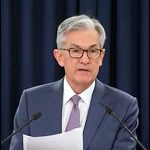
By Pam Martens and Russ Martens: May 26, 2020 ~ If you are an individual and you want to buy stocks on margin at a brokerage firm in the U.S., under Federal Reserve Board Regulation T the brokerage firm can lend you a maximum of 50 percent of the total initial purchase price. Not all stocks are eligible for margin. There are also maintenance margin requirements imposed by the industry, stock exchanges and the brokerage house itself if the stock value drops after the initial purchase, which could trigger a margin call and subject you to having to deposit more cash or securities under penalty of having your account liquidated at a loss.) Regulation T grew out of the stock market crash of 1929 and ensuing economic collapse known as the Great Depression. The crash was correctly blamed on the lack of regulation of Wall Street firms which were allowing … Continue reading
The Fed’s Top Wall Street Cop Was Bilked in a Brazen Stock Fraud – Here’s Why It Matters to You
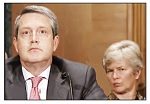
By Pam Martens and Russ Martens: May 25, 2020 ~ Randal Quarles is the Vice Chairman for Supervision at the Federal Reserve Board. This is the most important position among Federal regulators when it comes to sniffing out and preventing the kind of systemic in-house bank frauds that collapsed much of Wall Street in 2008 and brought on the greatest U.S. economic downturn since the Great Depression. On November 26, 2018, Quarles was also appointed to a three-year term as Chairman of the Financial Stability Board, the international standard-setting body for financial stability around the globe. Financial stability at the largest global banks that Quarles oversees is looking less certain today than it has since the last financial crisis. Quarles is playing a key role in helping Fed Chairman Jerome Powell establish emergency lending facilities that are making trillions of dollars in revolving loans to Wall Street banks and trading … Continue reading
Fed Chair Powell Promises “Transparency,” then Draws the Dark Curtain Tighter

By Pam Martens and Russ Martens: May 22, 2020 ~ During his appearance before the Senate Banking Committee this past Tuesday, Federal Reserve Chairman Jerome Powell told Senator Jon Tester that the Fed “has committed to disclose all of the borrowers and the amounts in a timely way.” Powell was referring to the alphabet soup of emergency bailout programs for Wall Street that the Fed has established under Section 13(3) of the Federal Reserve Act. In a statement released by the Fed on April 23, it also said this on the subject of transparency: “…the Board will report substantial amounts of information on a monthly basis for the liquidity and lending facilities using Coronavirus Aid, Relief, and Economic Security, or CARES, Act funding, including the: Names and details of participants in each facility; Amounts borrowed and interest rate charged…The Board will publish reports on its CARES Act 13(3) facilities on … Continue reading
In Last Bailout, the Fed Outsourced Management to the Banks Being Bailed Out – then Paid them Huge Fees for their Work

By Pam Martens and Russ Martens: May 21, 2020 ~ Many of the darkest secrets of the Federal Reserve’s bailout of Wall Street banks during the 2007 to 2010 financial crisis are cryptically contained in the government audit of the Fed’s emergency lending programs that was released to the public on July 21, 2011. A careful reading shows that some of the very same Wall Street mega banks that were in desperate need of, and receiving, bailout funds from the Fed were given assignments by the Fed to oversee parts of the bailout. Making the situation even more ludicrous, those same firms were paid huge fees by the Fed for their work. There is good reason to believe that the same plan is in the works for the Fed’s latest bailout. The audit by the Government Accountability Office (GAO), the nonpartisan watchdog for Congress, shows that during the last financial … Continue reading
Taxpayers Are on the Hook for 98 Percent of the Fed’s $6.98 Trillion Balance Sheet
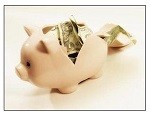
By Pam Martens and Russ Martens: May 19, 2020 ~ If there has been any positive outcome from the COVID-19 pandemic, it has been that the American people are beginning to take a cold, hard look at how the U.S. economy has been engineered as a vast wealth transfer system for the one percent. We have peeled back the dark curtain further today on how the Federal Reserve has been structured as an unlimited money spigot to enrich that one percent as it privatizes profits for the criminally-inclined Wall Street titans and socializes the losses to the law-abiding 99 percent of hardworking Americans. ~~~ The Federal Reserve Board of Governors consists of seven individuals appointed by the President of the United States and confirmed by the U.S. Senate. As of today, only five of those Governor seats have been filled. As of last Wednesday, these five unelected individuals were overseeing … Continue reading
The Fed’s Chair and Vice Chair Got Rich at Carlyle Group, a Private Equity Fund with a String of Bankruptcies and Job Losses

By Pam Martens and Russ Martens: May 18, 2020 ~ Private equity funds have been variously called “merchants of debt,” “vultures,” or “corporate raiders.” What a private equity fund typically does is to buy up companies by piling debt on the balance sheet, selling off valuable assets like real estate, extracting giant dividends for the private equity partners to the detriment of workers and customers, and then, frequently, letting the company collapse into bankruptcy while laying off thousands of workers or liquidating the whole company. It should give pause to every American that the two top men at the Federal Reserve who are implementing a new $4.54 trillion bailout fund for Wall Street, using $454 billion from taxpayers to absorb the losses, both got rich working for one of the world’s largest such private equity firms: the Carlyle Group. According to his official bio, Fed Chairman Jerome Powell was a … Continue reading
Wall Street Banks Paid $11.7 Billion in Dividends to Investors this Year while Taxpayers Must Absorb $454 Billion of Bank Losses

By Pam Martens and Russ Martens: May 15, 2020 ~ Following the Wall Street banking collapse in 2008, the then head of the Federal Deposit Insurance Corporation (FDIC) Sheila Bair wrote the book Bull by the Horns. She described how the Federal Reserve and the Office of the Comptroller of the Currency (OCC) had ignored the systemic problems at Citigroup and allowed this “sick bank” to continue paying out cash dividends. Bair wrote as follows: “By November [of 2008], the supposedly solvent Citi was back on the ropes, in need of another government handout. The market didn’t buy the OCC’s and NY Fed’s strategy of making it look as though Citi was as healthy as the other commercial banks. Citi had not had a profitable quarter since the second quarter of 2007. Its losses were not attributable to uncontrollable ‘market conditions’; they were attributable to weak management, high levels of … Continue reading
Evidence Suggests U.S. Financial Crisis Started on August 14, 2019
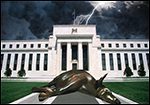
By Pam Martens and Russ Martens: May 14, 2020 ~ In the Federal Reserve’s most recent “Supervision and Regulation Report” on the big bank holding companies it “supervises,” the Fed continued its attempts to perpetuate the narrative that “The banking industry came into 2020 in a healthy financial position” and has simply unraveled as a result of the COVID-19 pandemic. That narrative is built on the same flimsy house of cards that the New York Times and Andrew Ross-Sorkin built the narrative that the mega banks on Wall Street were not responsible for the 2008 financial collapse. The Fed is desperate to promote this narrative to stop a new Congress next year from holding hearings on why the Fed, for the second time in 12 years, had to engage in trillions of dollars in Wall Street bank bailouts after reassuring Congress for years that the financial system was fine as … Continue reading

